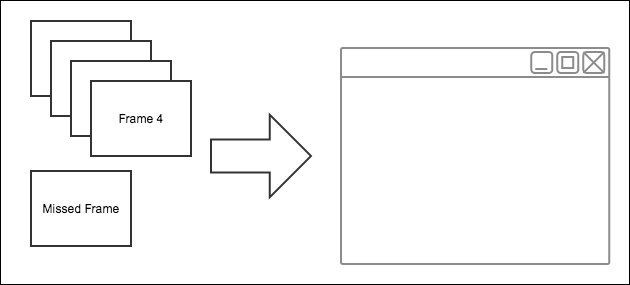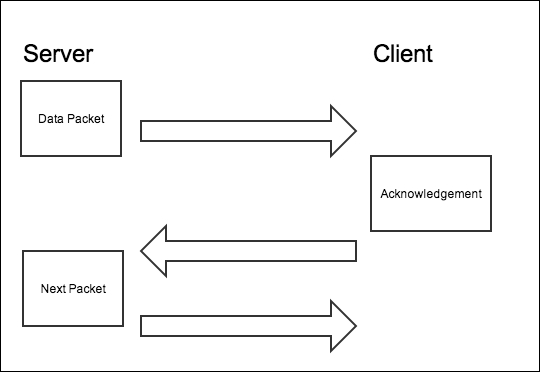The first step of any WebRTC application is to create an RTCPeerConnection. Creating a successful RTCPeerConnection will require an understanding of the inner workings of how a browser creates peer connections. Firstly, in this chapter, we will lay the groundwork to understand the internals of WebRTC. Then we will utilize this knowledge to create a basic WebRTC video chat application.
In this chapter, we will cover the following topics:
- Understanding UDP transport and real-time transfer
- Signaling and negotiating with other users locally
- Finding other users on the Web and NAT traversal
- Creating an
RTCPeerConnection
Real-time transfer of data requires a fast connection speed between both the users. A typical connection needs to take a frame of both—audio and video—and send it to another user between 40 and 60 times per second in order to be considered good quality. Given this constraint, audio and video applications are allowed to miss certain frames of data in order to keep up the speed of the connection. This means that sending the most recent frame of data is more important than making sure that every frame gets to the other side.
A similar effect can already be seen with any video-playing application today. Video games and streaming media players can tolerate losing a few frames of video due to the special properties of the human brain. Our minds try to fill in the missing gaps as we visualize and process a video or game that we are watching. If our goal is to play 30 frames in one second and we miss frame 28, most of the time, the user will not even notice. This gives our video applications a different set of requirements:

That is why User Datagram Protocol (UDP) is the transport protocol of choice when dealing with WebRTC applications. It gives us the power, or rather the lack of control, we need when dealing with a high-performance application. Most web applications today are built on top of the Transmission Control Protocol (TCP). The reason for this is because of the guarantees it makes for its users, some of which are listed here :
These features are the reason why TCP is a great choice for most things on the Web today. If you are sending an HTML page, it makes sense to have all the data come in the correct order with a guarantee that it got to the other side. Unfortunately, this technology is not a great fit for all use cases. Take, for instance, streaming data in a multiplayer game. Most data in a video game becomes stale in seconds or even less than that. This means that the user only cares about what has happened in the last few seconds and nothing more. If every piece of data needs to be guaranteed to make it to the other side, this can lead to a large bottleneck when the data goes missing:

It is the need to work around the constraints of TCP that led the WebRTC developers to choose UDP as their preferred method of transport. The audio, video, and data requirements of WebRTC are not meant to be the most reliable connection, but rather to be the fastest one between the two browsers. This means we can afford to lose frames, which in turn means that UDP is a much better choice for these types of applications.
UDP enables this scenario by making a lot of non-guarantees. It was built to be a less reliable transport layer that makes fewer assumptions about the data you are sending. You can see why in this list of things it does not guarantee:
- It does not guarantee the order your data is sent in or the order in which it will arrive on the other side
- It does not guarantee that every packet of data will make it to the other side; some may get lost along the way
- It does not track the state of every single data packet and will continue to send data even if data has been lost by the other client
Now, WebRTC can send audio and video in the fastest way possible. This should also reveal why WebRTC can be such a complex topic. Not every network allows UDP traffic across it. Large networks with corporate firewalls can block UDP traffic outright to try and protect against malicious connections. These connections have to travel along a different path than most of the web page downloads do today. Many workarounds and processes have to be built around UDP to get it to work properly for a wide audience. This is just the tip of the iceberg when it comes to WebRTC technology. In the next few sections, we will cover the other supporting technologies that enable WebRTC in the browser.
